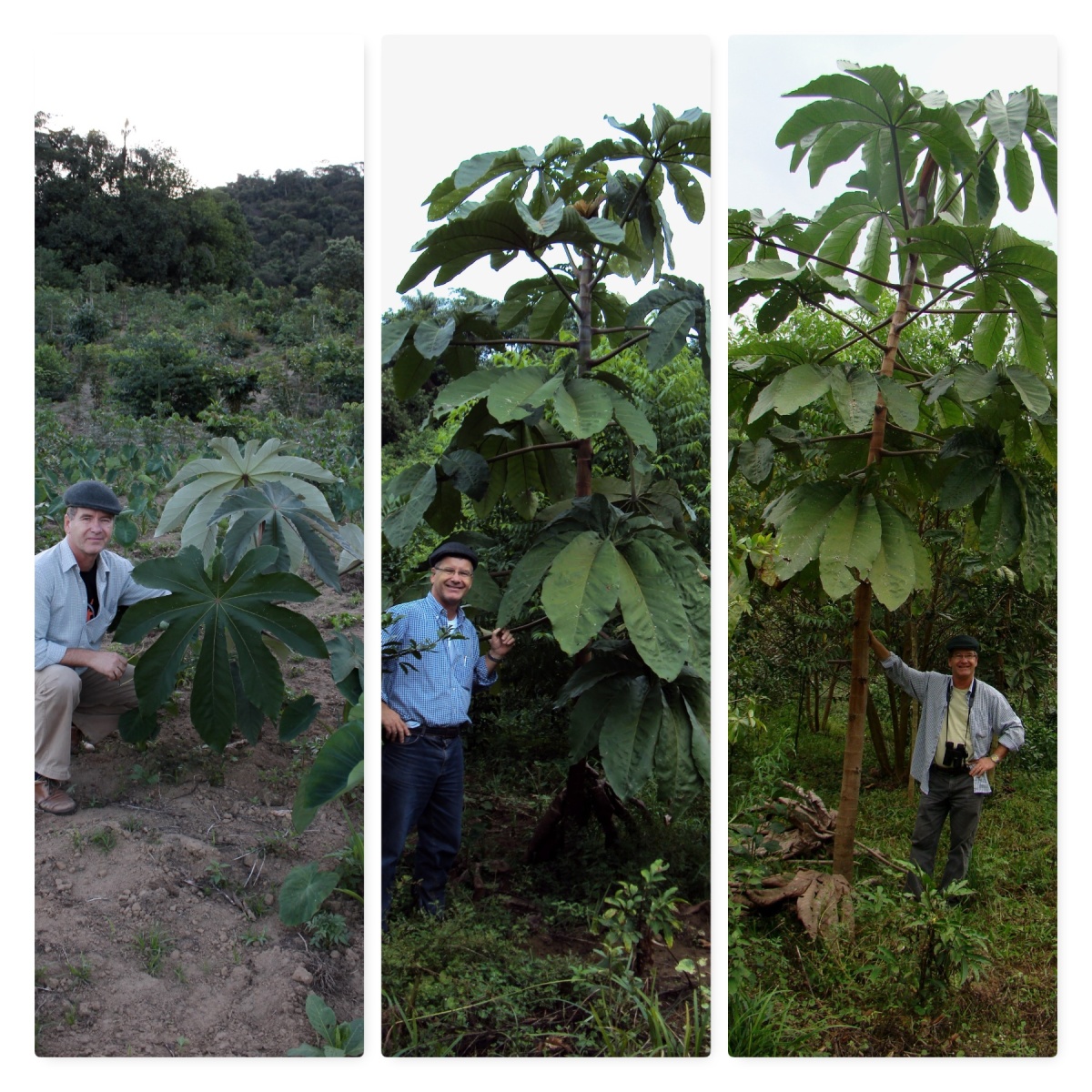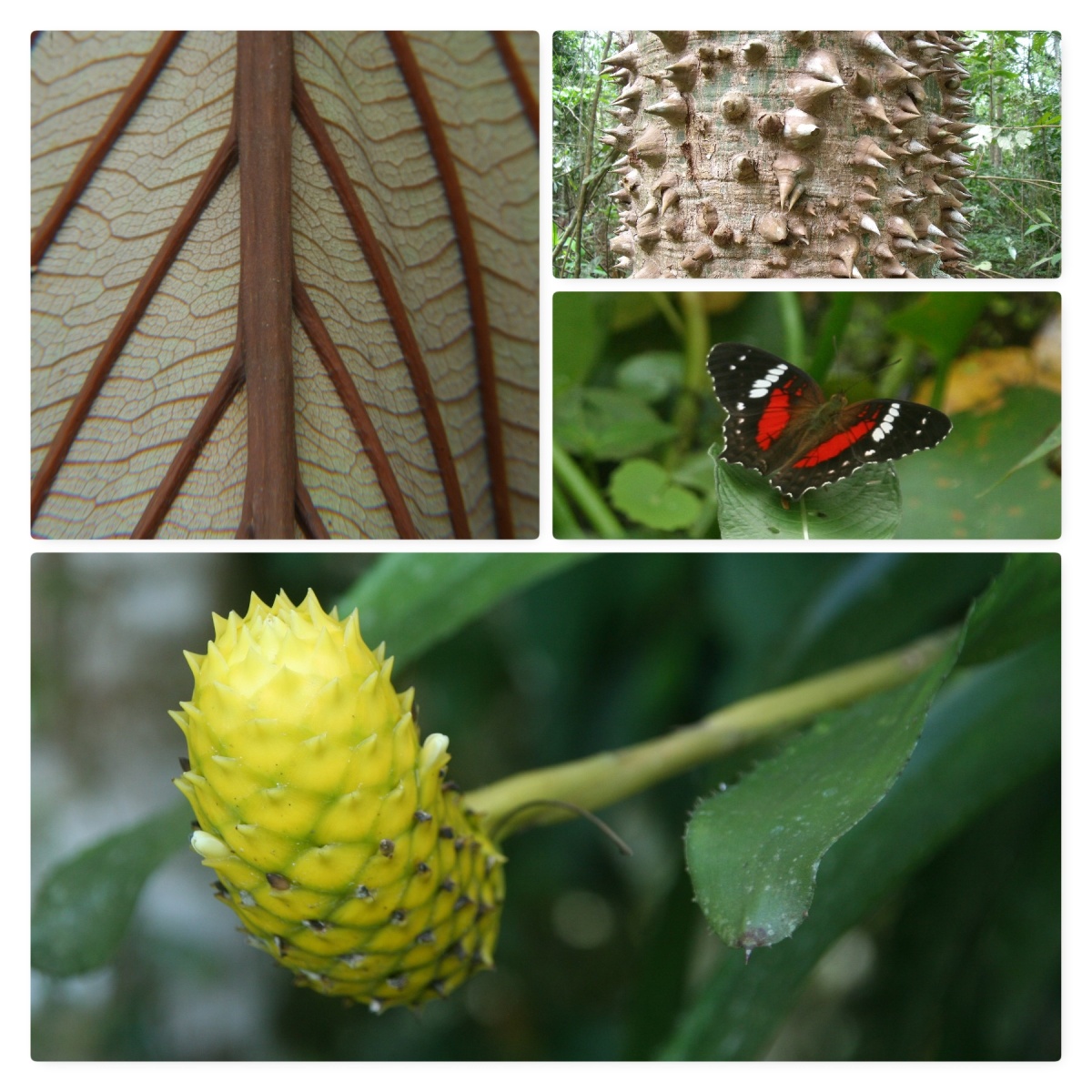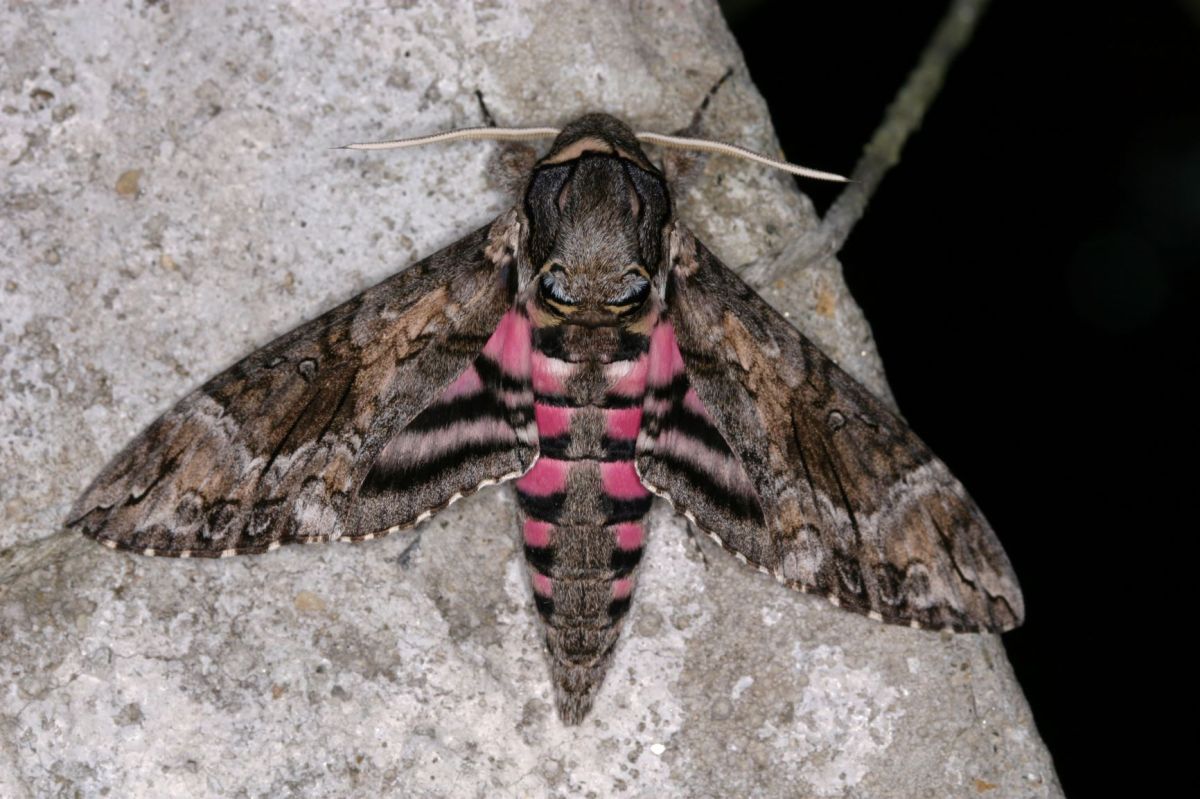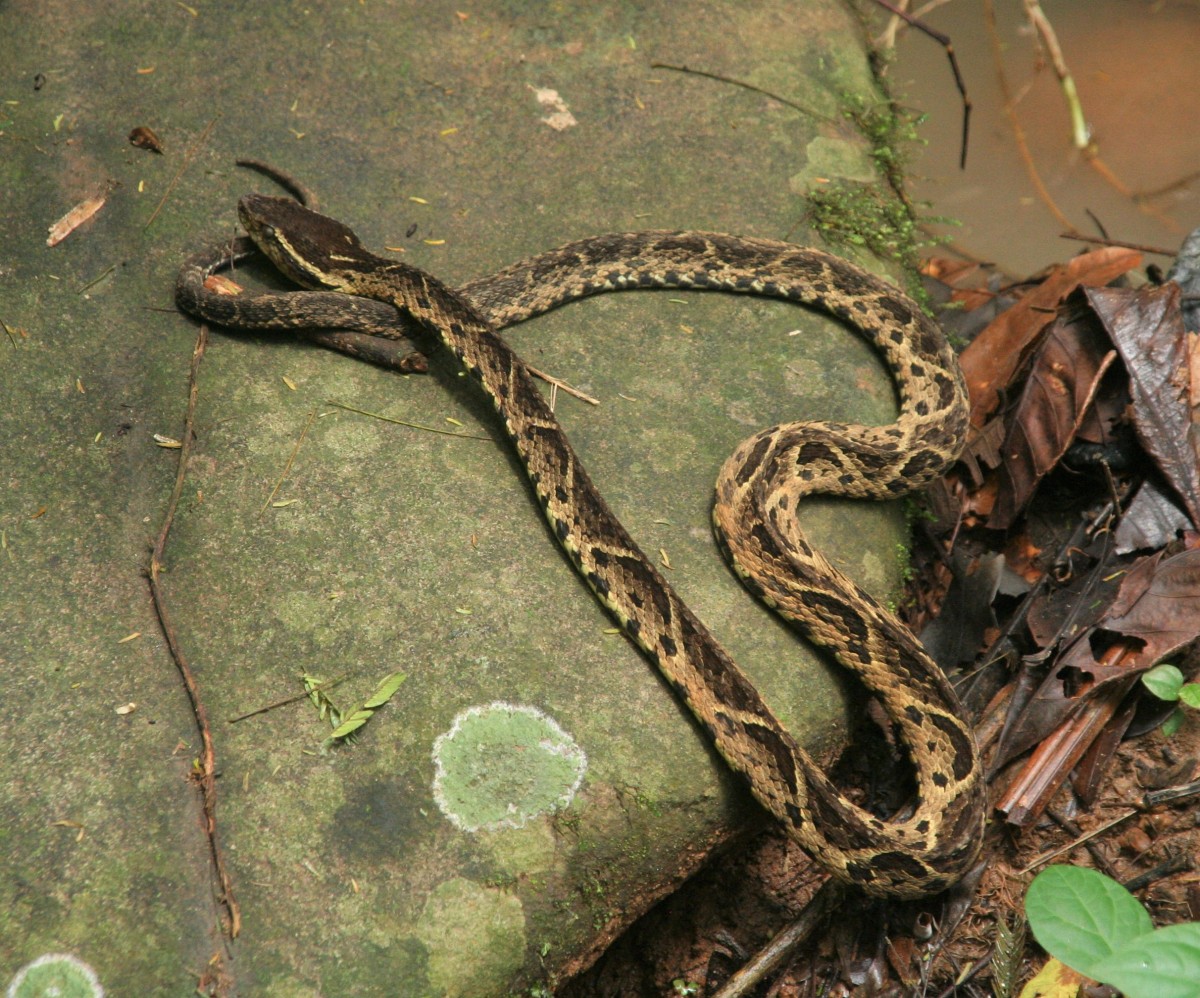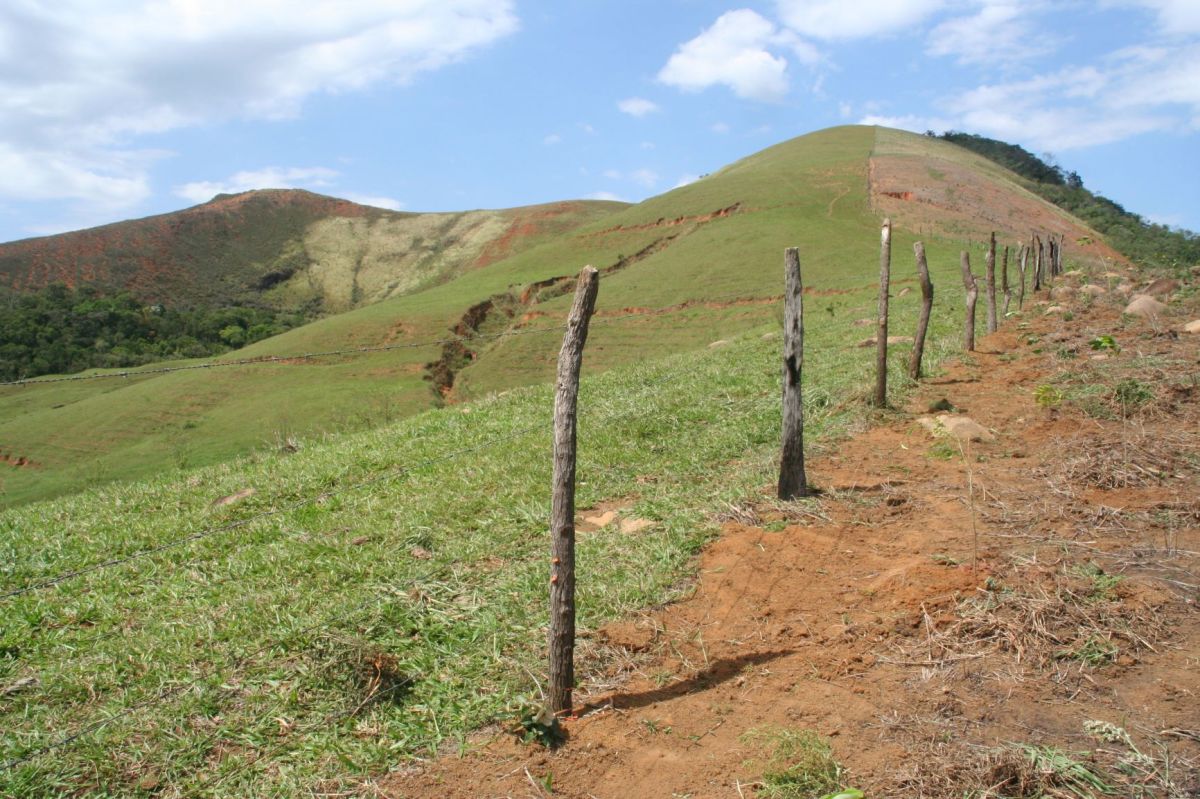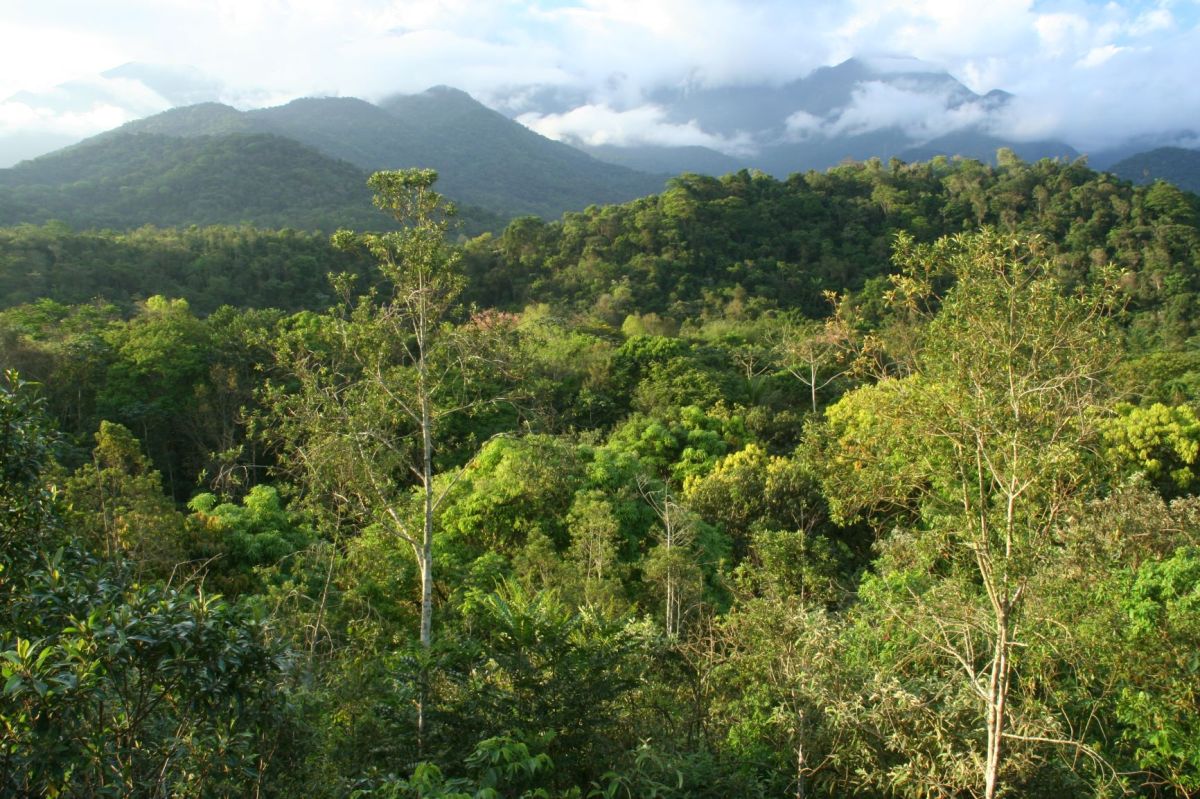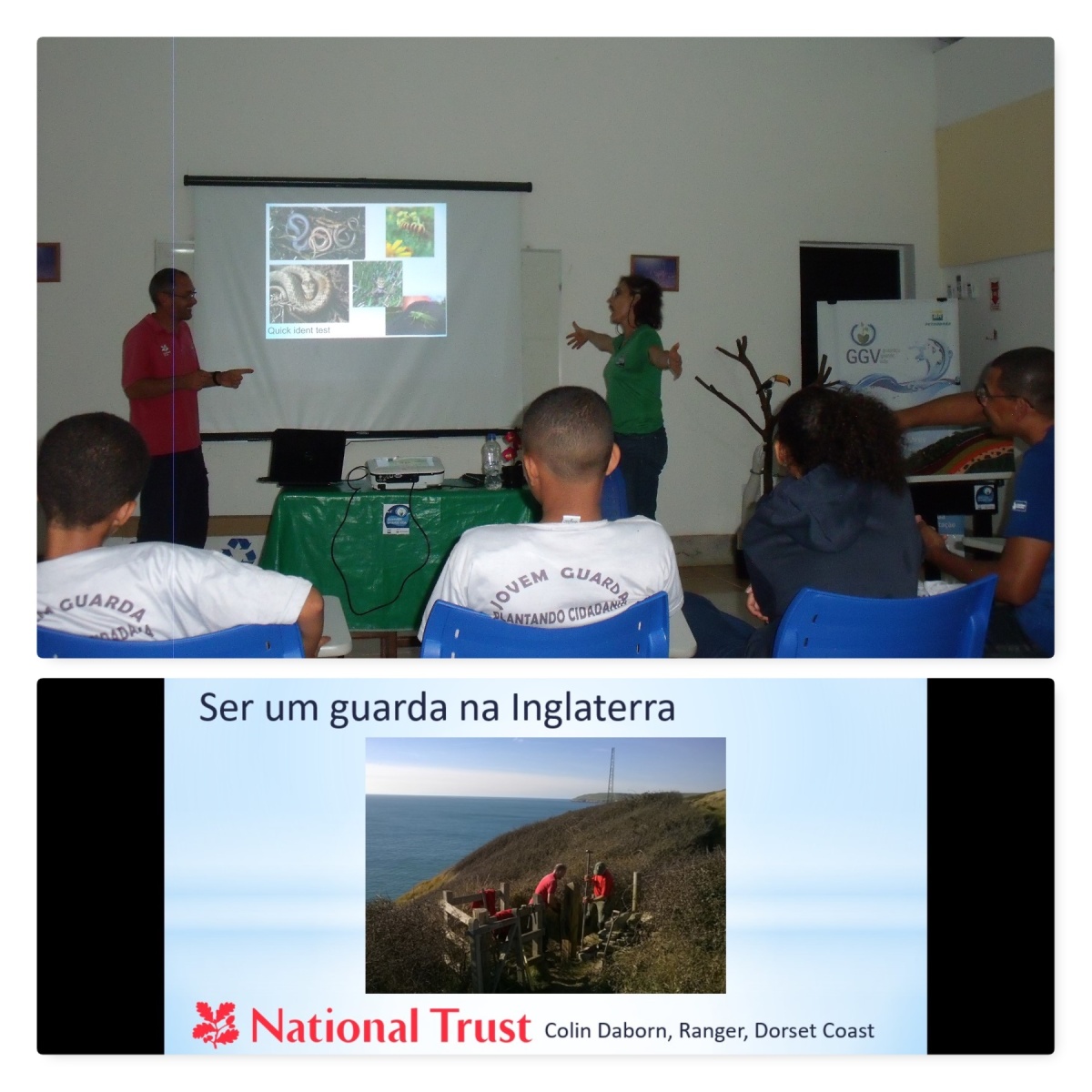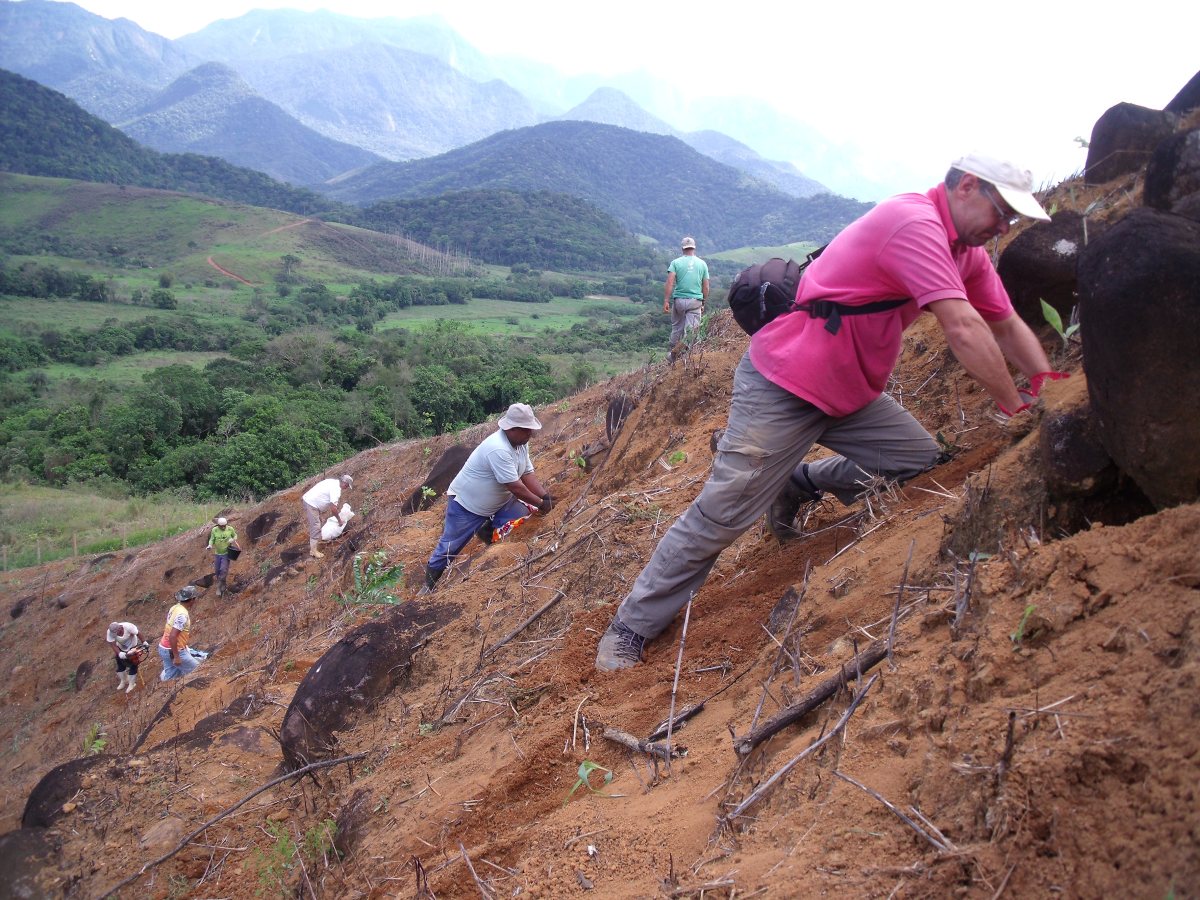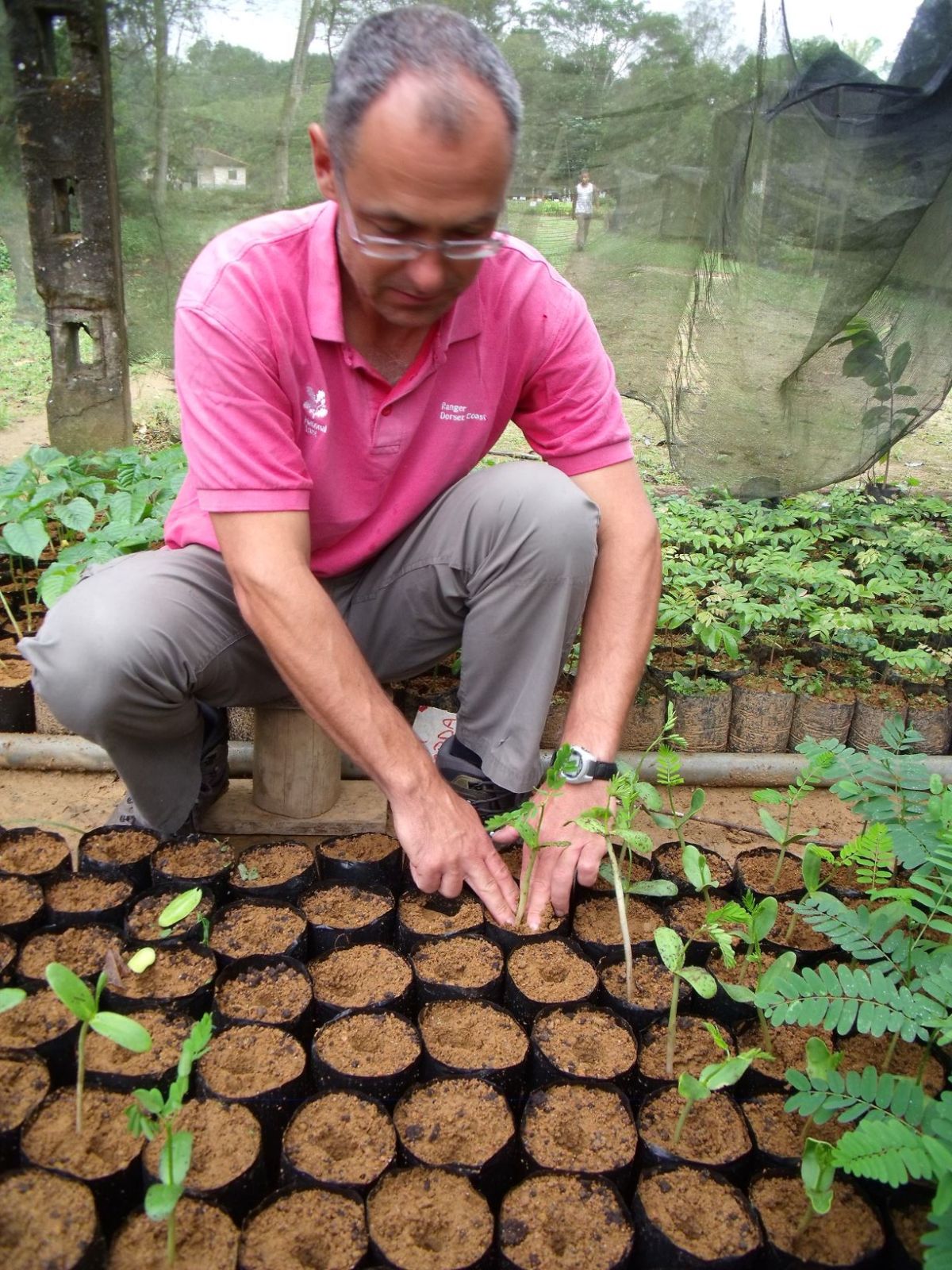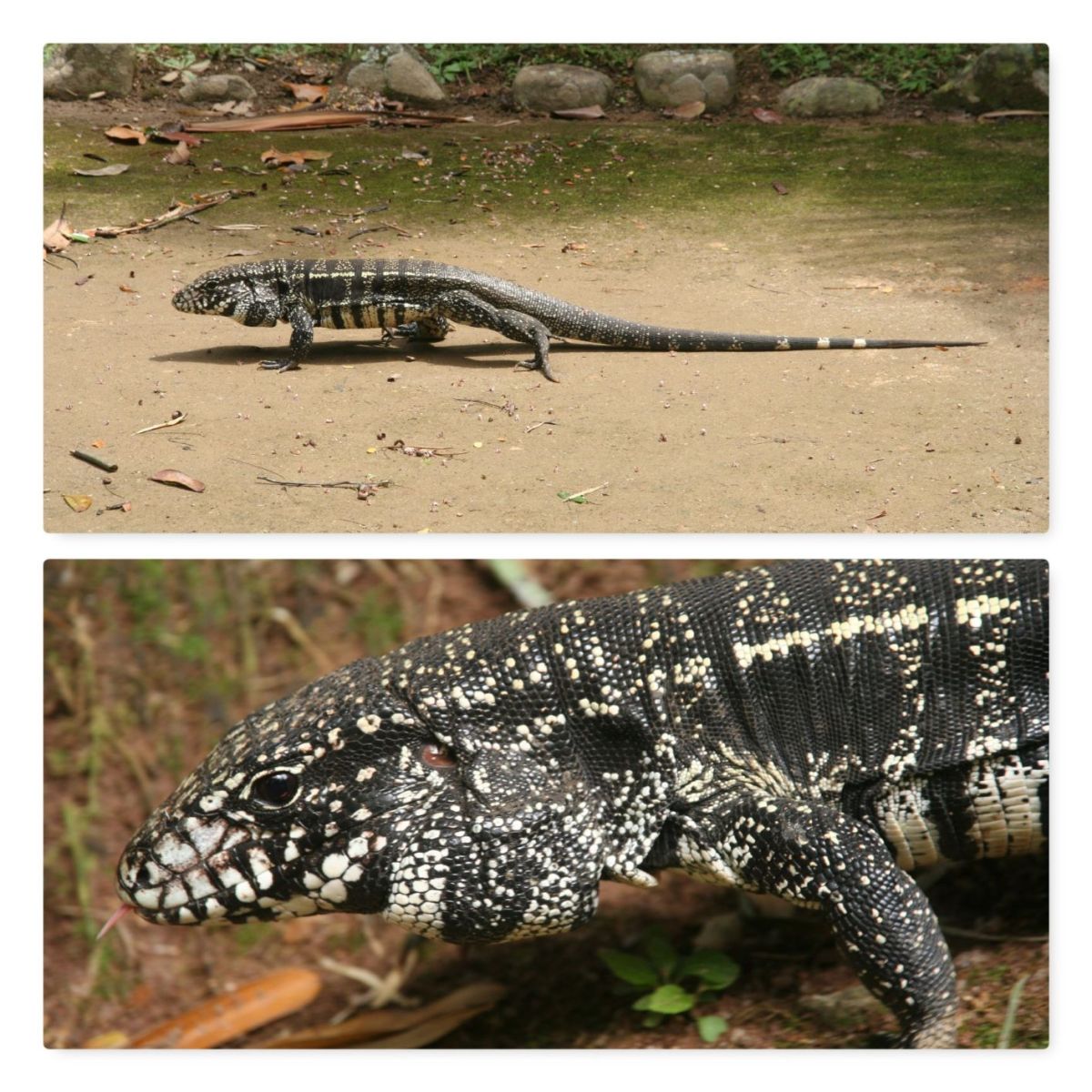Tree planting again and I was struck by the huge variety of young saplings interspersed across the hillside. At REGUA up to 120 species are used in reforestation, around 70% of any mix will be ‘pioneer species’ – trees that first colonise an area of open ground, tolerate full sunlight and grow rapidly. These three photos of a Cecropia tree were taken just one year apart and show how quickly some pioneers grow. As they die off, sometimes in as little as seven years, they decompose and add vital nutrients to the depleted soil.
Nicholas, the man standing by the tree, is one of the founders of the reserve. With the work that’s been achieved here you could say he is a pioneer too.
Photo Credit: Alan Martin.

